
By Bodil Bluhm, Research Associate Professor in Marine Biology and Biological Oceanography - University of Alaska Fairbanks,
Russ Hopcroft, Professor - University of Alaska's Institute of Marine Science at Fairbanks,
and Katrin Iken, Associate Professor in Marine Biology - University of Alaska Fairbanks
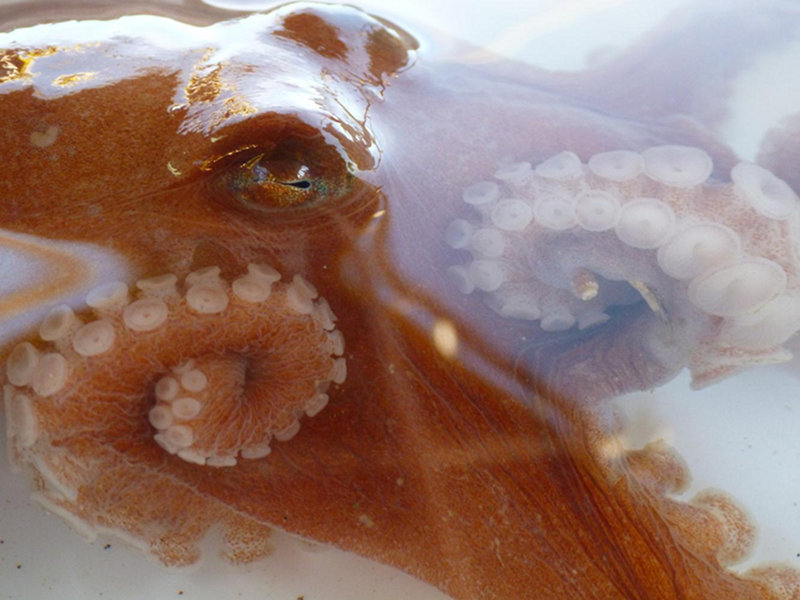
An octopus caught in a benthic trawl. Image courtesy of K. Iken, UAF. Download larger version (jpg, 354 KB).
Marine biodiversity refers to the variety of living organisms in the ocean, from bacteria and fungi to invertebrates and fishes, all the way to marine mammals and birds. These biota are intricately connected with the environmental conditions they occur at and also with each other through the flow of energy (food) through the ecosystem. Any changes in the environment or this energy flow will lead to changes in the biodiversity.
The need to assess the current status of marine biodiversity in the Arctic is increasing as naturally and human-induced climate alterations affect the biota inhabiting the Arctic Ocean. In turn, biodiversity changes can serve as indicators of environmental change.
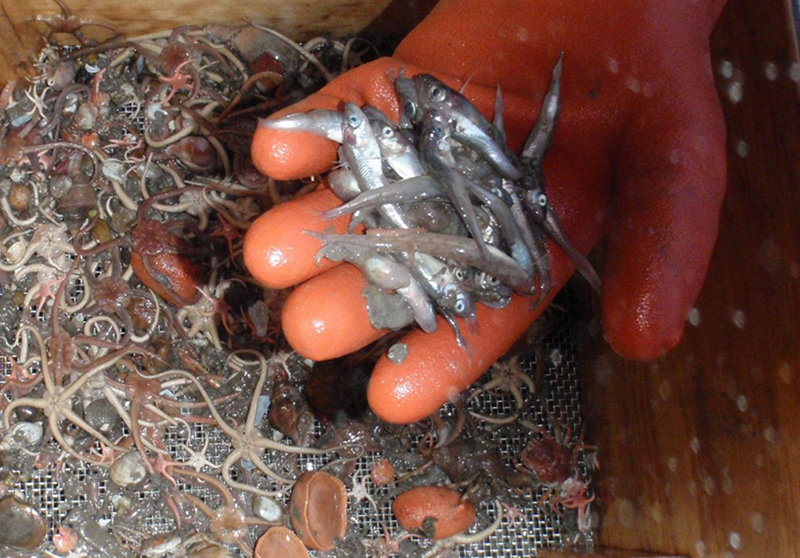
Small Arctic cod are one of the more abundant fish species caught on the Arctic shelf. Image courtesy of B. Bluhm, UAF. Download larger version (jpg, 513 KB).
Changes in global climate have the most pronounced effects in high latitudes. One of the more visible effects is the dramatic reduction in sea ice cover with predictions for a completely ice-free Arctic during the summers by the end of the century. Oceanographic changes such as warming sea surface temperatures, changes in the salt budget, and the increased acidification of the ocean due to increased carbon-dioxide uptake from the atmosphere, all are predicted to have dramatic direct and indirect effects on the distribution, life history, and metabolism of Arctic biota.
In addition to climate changes, increased interest in the economic use of the Arctic once it is ice free, for example for fishing and oil and gas extraction, also poses potential stress to the currently existing biological communities.
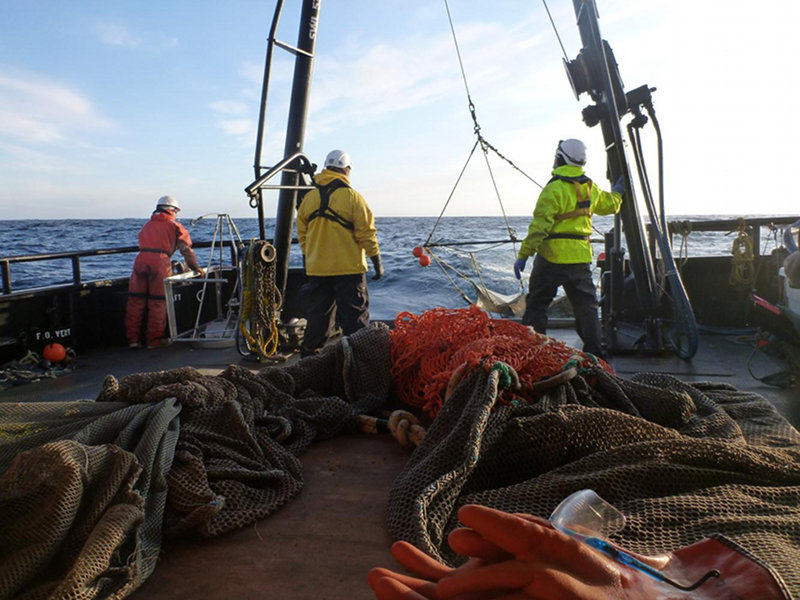
Beam trawl to capture fish and benthic invertebrates is brought on board of the research vessel. Image courtesy of B. Bluhm, UAF. Download larger version (jpg, 410 KB).
Changes in the biodiversity of the Arctic Ocean are not a sudden event, and long-term changes have to be distinguished from short-term fluctuations brought on by natural variability in populations and climate. Long-term monitoring, that is the repeated survey of the same geographical region, is necessary for scientists to be able to discern persistent changes to Arctic biodiversity and the ecosystem and to identify the environmental drivers responsible for these changes.
Such long-term monitoring of the Arctic Chukchi Sea is the goal of the RUSALCA (Russian-American Long-term Census of the Arctic) program, encompassing both Russian and U.S. territorial waters in its surveys.
Elements of the long-term biodiversity monitoring during the RUSALCA program include zooplankton (small organisms living in the water column), benthos (organisms living on and within the seafloor), fishes, and marine mammal and bird observations. Typical Arctic plankton organisms include small crustaceans such as copepods, krill, and amphipods and soft-bodied, gelatinous organisms such as jellies, comb-jellies, pteropods (winged snails), and larvaceans.
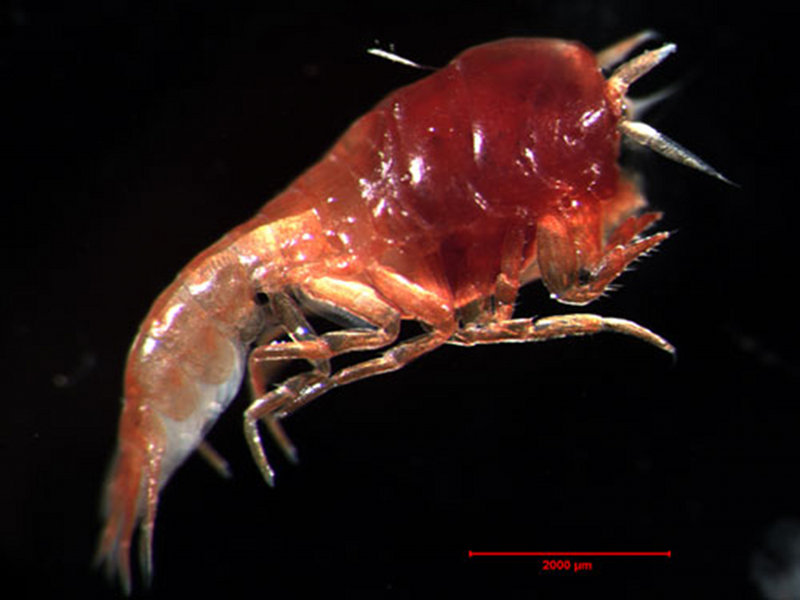
Amphipods can be common within the Arctic zooplankton community. Image courtesy of R. Hopcroft, UAF. Download larger version (jpg, 208 KB).
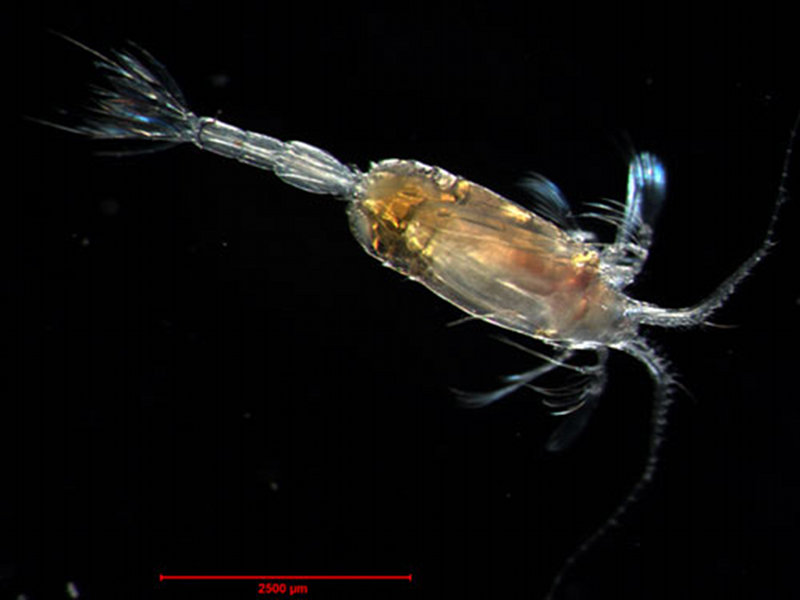
Copepods are the most numerous and arguably the ecologically most important members of the Arctic zooplankton. Image courtesy of R. Hopcroft, UAF. Download larger version (jpg, 153 KB).
We believe there to be about 350 different zooplankton species within the Arctic, the greatest diversity of which occur within the deep central basins. Each summer, the Arctic zooplankton assemblage in the inflow seas are mixed with, and even displaced by, more southern (temperate) zooplankton species that can survive in the warmer waters that they travel within. The big question is “Are these more southern species present longer - or travelling farther - than they have in the past?” The same question can be asked for fish species “riding” the warm waters northward into the Arctic Ocean.
Benthic organisms are distinguished into those living on top of the seafloor (epifauna) and those living buried within the sediments (infauna). In contrast to the plankton community, benthic communities remain in place for longer time periods because of their more sedentary lifestyle and longer life spans, and they are thus more stable.
Typical epifauna (> 1 millimeter) on Arctic shelves includes brittle stars, sea stars, crabs, snails, and bottom-dwelling fishes. Species richness and community composition is dependent on the substrate type, with sessile organisms such as sea anemones and moss animals (Bryozoa) adding significantly to local diversity when rocks or other hard substrate are available for attachment.

Basket stars as part of a benthic trawl catch. Image courtesy of K. Iken, UAF. Download larger version (jpg, 656 KB).
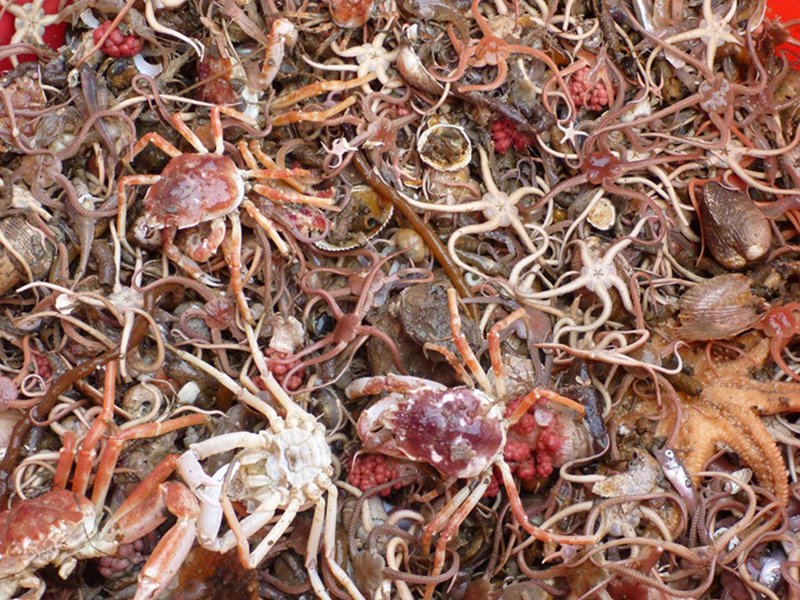
Crabs and brittle stars are common members of the benthic community in the Arctic. Image courtesy of B. Bluhm, UAF. Download larger version (jpg, 662 KB).
Common infauna organisms include worms, clams, and amphipods, and their diversity is partly driven by the grain size of the sediment in which they live.
All benthic communities and their diversity are strongly dependent on the food supply that reaches them from the water column. Benthic community abundance and biomass tend to decrease with water depth, e.g., from the shallow Chukchi Sea shelf into the deep Arctic Ocean basin.
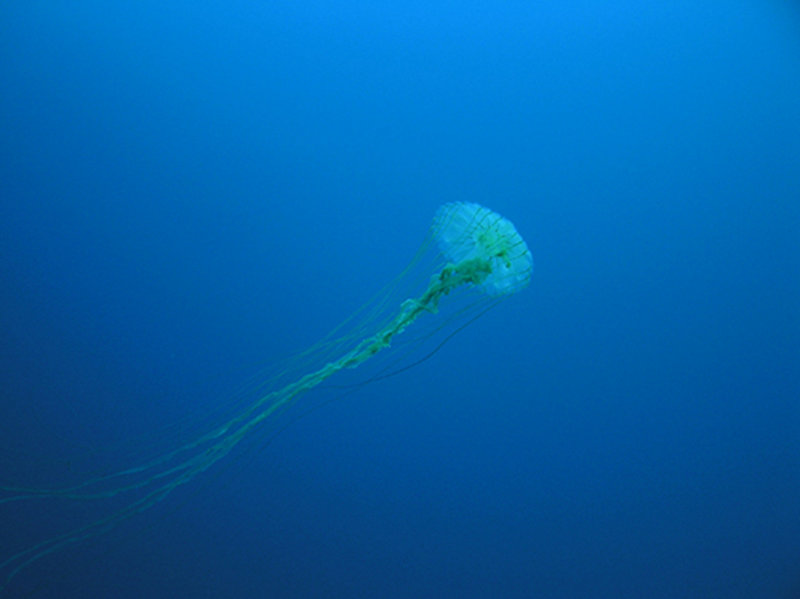
Large jelly fish in the Arctic Ocean. Image courtesy of K. Iken, UAF. Download larger version (jpg, 255 KB).
Intense research efforts, including those by RUSALCA scientists, have increased the known species inventory of the Chukchi Sea by nearly 300 species in the last decade to almost 1,500 known total species. This updated number includes several species new to science that were recently described, including snails described from specimens archived for over 60 years.
As in most oceans, over 90 percent of the species richness in the Chukchi Sea is comprised of benthic species. Benthic and pelagic communities in the Chukchi Sea are mostly of Pacific origin because of the strong exchange processes through the Bering Strait, but Arctic populations are typically highly adapted and fine-tuned to the local conditions. Warming waters in the Arctic could allow opportunistic, Pacific cold-water benthic species to invade the Chukchi shelf and compete for resources with the highly adapted and therefore vulnerable Arctic populations.